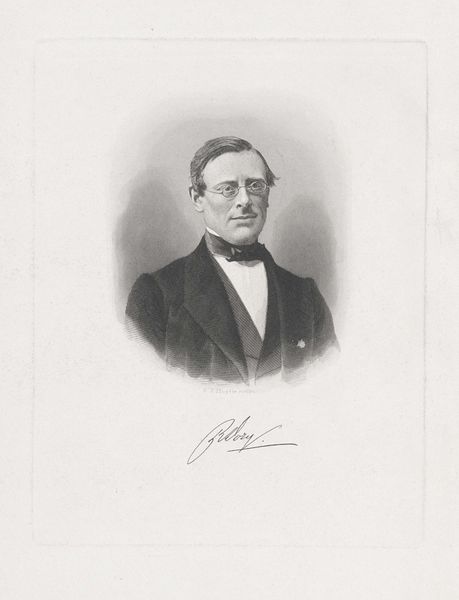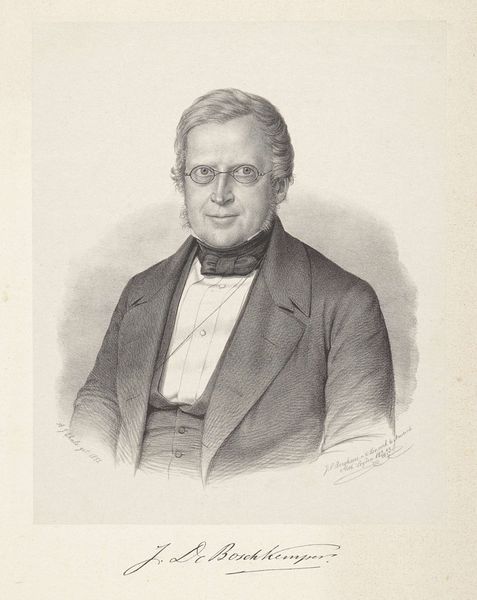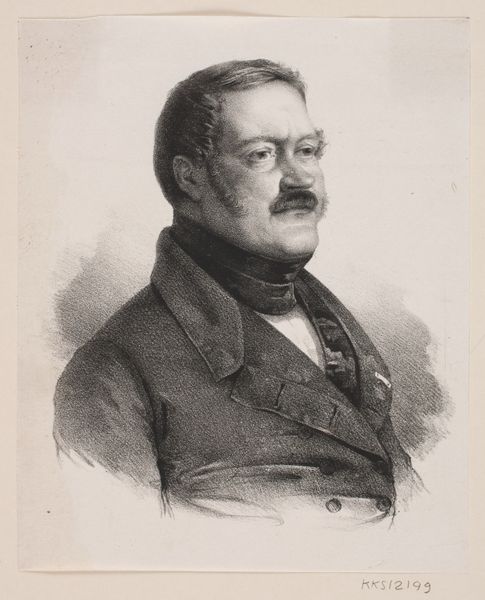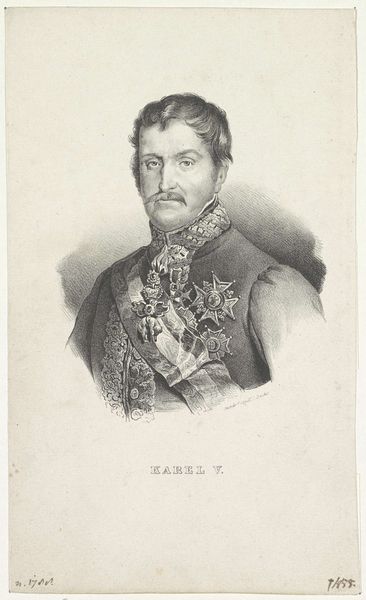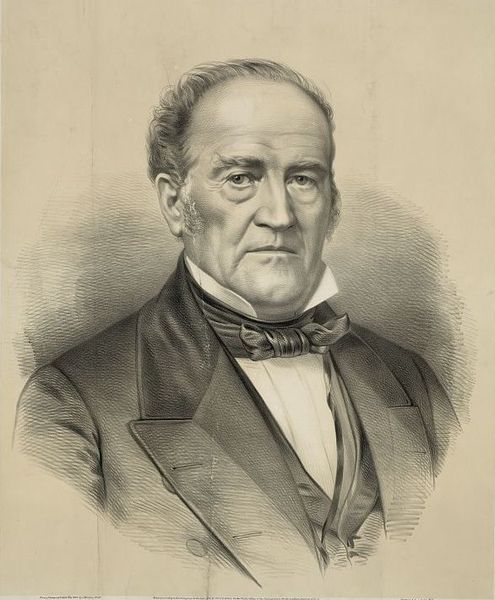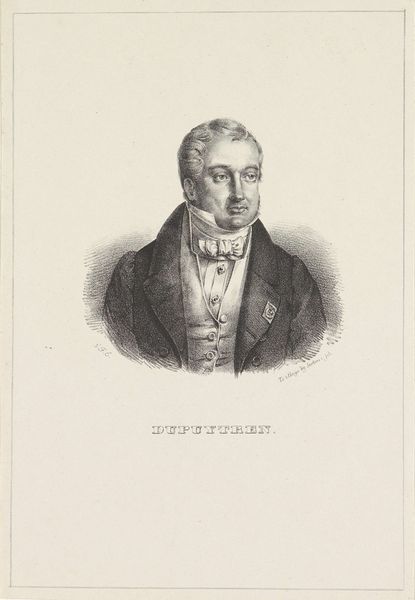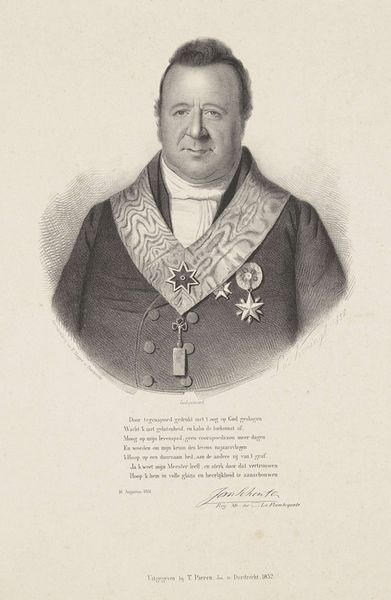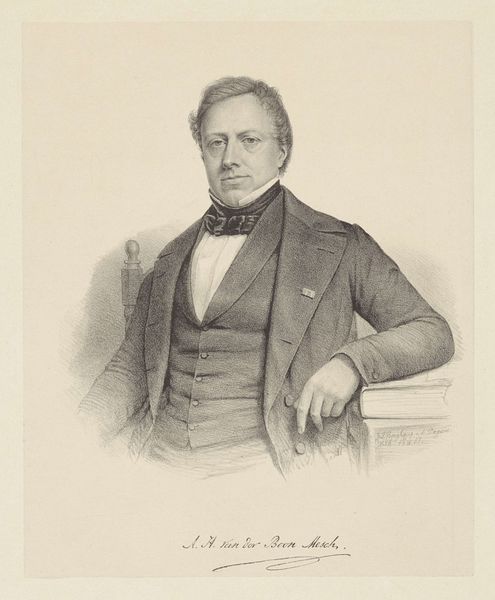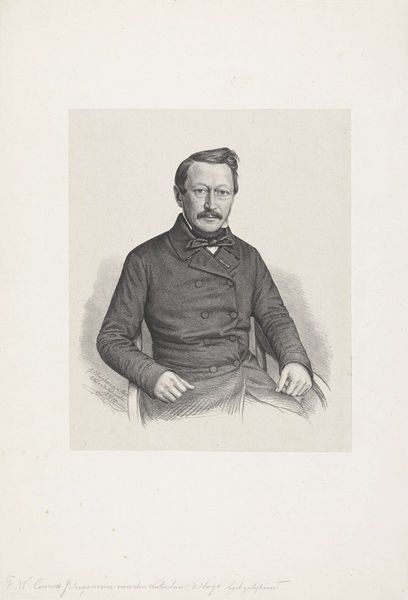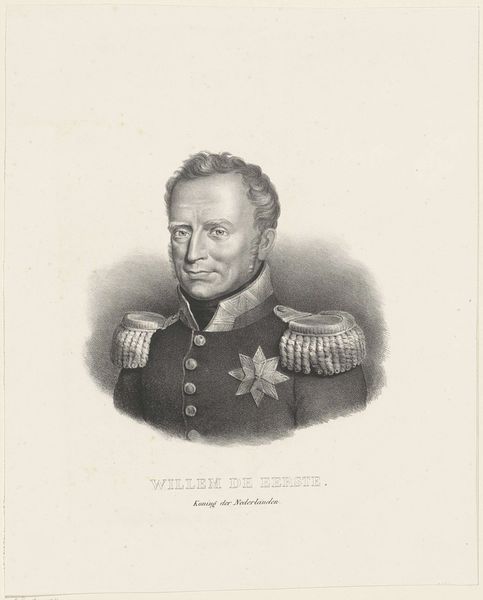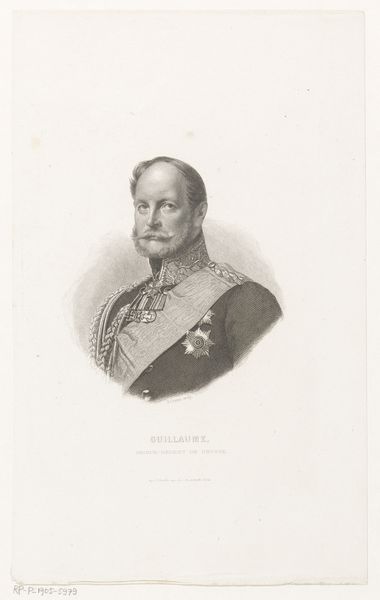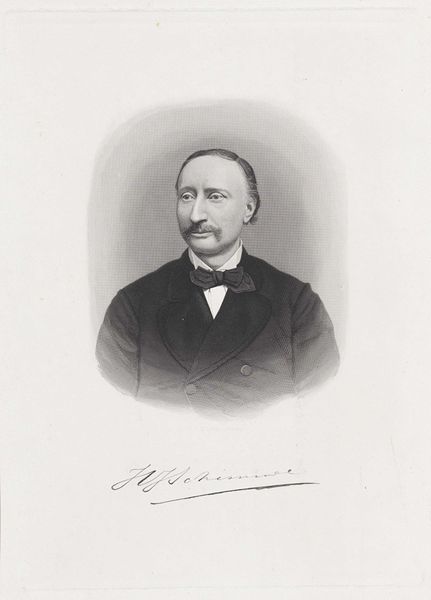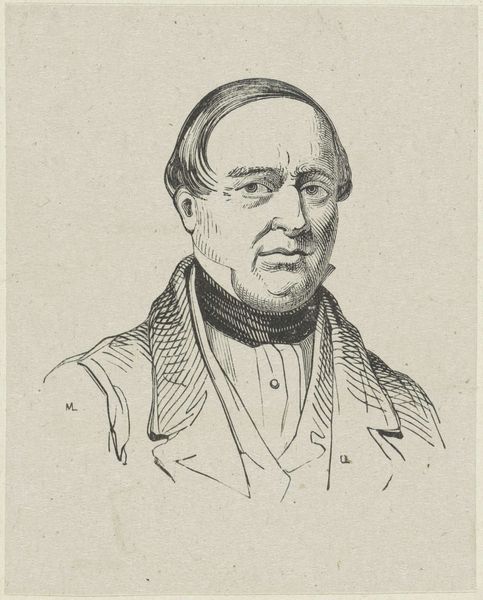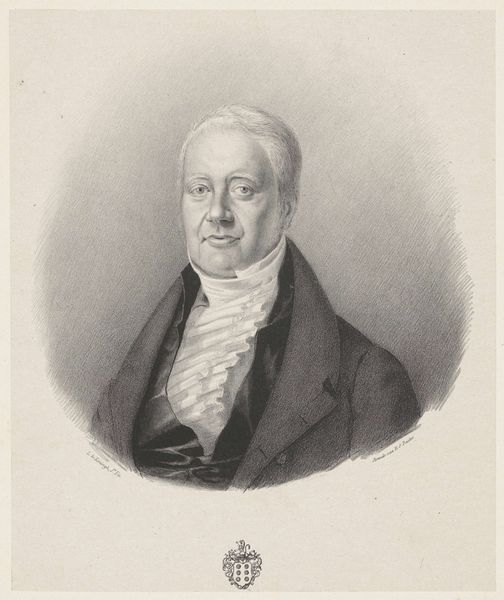
drawing, graphite
#
portrait
#
drawing
#
pencil drawing
#
graphite
#
portrait drawing
#
academic-art
Dimensions: height 385 mm, width 290 mm, height 485 mm, width 350 mm
Copyright: Rijks Museum: Open Domain
Curator: Welcome, let’s turn our attention to "Portret van Cornelis Gillis Ocker Stoop," a graphite and pencil drawing dating back to 1855, now housed here at the Rijksmuseum. It's the work of Leonard de Koningh. Editor: Immediately, I feel a sense of gravitas. He’s gazing straight ahead, a steady look. What’s remarkable is the almost photographic realism de Koningh achieves with just graphite. The softness he coaxes out of the medium! Curator: That realism was key. The mid-19th century saw portraiture become increasingly tied to notions of accurate representation. Stoop was a prominent figure; likenesses helped cement status and memory. Notice the attire. He’s donned in official garments denoting membership within Freemasonry. This would communicate ideas about enlightened society, civic duty, and so on. Editor: The collar IS elaborate. Symbols sprouting all over—a pyramid with an all-seeing eye, geometric details like rays of light. But his expression! It betrays…discomfort? I wonder what’s going through his mind. All the power of society bearing down on him? Curator: Power certainly came with its own performance requirements. Artists created visual symbols to help frame individuals in relation to larger cultural ideas and ideologies. And we mustn’t assume simple discomfort; it's probably strategic for Stoop. Look closely. How posture conveys both command and deference, nodding to different audiences. Editor: That’s perceptive! I always read faces first. But now that you mention it, look how his gaze doesn’t break or evade. He wants to show seriousness and…worthiness. I’d initially read vulnerability; maybe it’s a stoic’s control. Curator: Portraits can often be understood as tools, shaping how sitters were received both contemporaneously and how we engage with them across time. These images don’t passively reflect society but instead construct reality in very strategic and deliberate ways. Editor: Hmm. Thanks. It's never just graphite on paper, is it? Looking again with that lens – that context – totally shifts my perception. A masterclass of strategic signalling, now. Curator: Indeed. And hopefully, a good example of how historical understanding enhances our encounters.
Comments
No comments
Be the first to comment and join the conversation on the ultimate creative platform.
